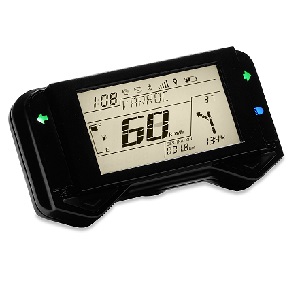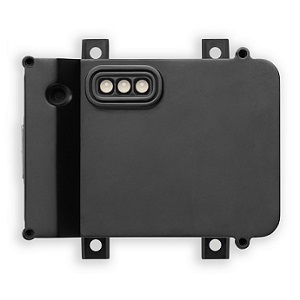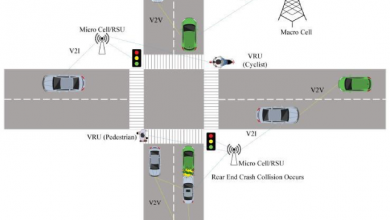Connected Two Wheelers and Smart Possible Use Cases

The two-wheeler market in India is forecasted to expand at a CAGR of 7.3% and reach a sales volume of 24.9 million units by 2024. The impact of existing pandemic on this equation will have to be seen. India also witnesses very high rate of death due to two-wheeler accidents. As per Govt survey 47,600 people died due to two-wheeler accidents on Indian roads in 2018. This also has a strong correlation with increasing sales of vehicles. Almost a 46% increase in accidental deaths compared to the figure in 2013 as against 20% increase in sales for the same period. Riding two-wheelers is already considered risky, which gets aided by the road conditions in our country. These conditions present a tremendous opportunity to reverse the accidental death rate by taking advantage of connectivity solutions in two-wheelers.

Major trends in automotive besides electrification and autonomous driving are connectivity and digitalization using IoT. As the automotive industry veers towards digitalization, vehicle telematics solutions are transforming connected two-wheelers (2W) from concept to reality. While modern commercial and passenger vehicles are already integrated with mainstream telematics and driver assistance features, the current wave of digital connectivity is now rapidly progressing into the 2W category as well. The number of smartphone users in India is expected to increase to 859 million by 2022 from 468 million in 2017. As per recent Govt regulations, all two-wheeler above 125 cc now comes with ABS and all two-wheelers are BS-VI complaints after 1st April 2020. These regulations along with electrification will introduce electronics into two-wheelers more than ever before. The advancement is network technologies to 5G will bring lots of opportunities to introduce new use cases into the two-wheelers addressing rider safety and comfort.
This article explores some use cases based on certain assumptions such as availability of electronics and CAN communication network in the vehicle.
Possible Use Cases of Connected Two-Wheelers
Millions of vehicles and fleets across the world connected with telematics devices can form an internet of vehicles collecting huge data from various parts of the country. This coupled with smartphones connectivity can bring various use cases such as
- Road & vehicle condition monitoring
- Driver behavior analysis
- SOS calls, smart helmets, and theft protection
- Vehicle Prognostics and Health management (PHM)
Monitoring the condition of roads and the vehicle is an important aspect of road safety, as deteriorating or damaged roads hold safety risk for two-wheeler riders, while poorly maintained vehicle can result in abrupt breakdown leaving the rider stranded at worst possible times and places. Road condition monitoring can notify riders of slippery roads, dangerous curves, potholes and even roads under repair. These use cases can be made possible by monitoring data from different connected vehicles plying on these roads and classifying the information using Artificial Intelligence/Machine Learning methods.
Another use case can be made from analyzing driver behavior while riding two-wheelers. This could be of great use for insurance companies, fleet owners, OEMs, policy makers as well as end users. For example, Varroc’s CarIQ platform provides key analytics around driver behavior and risk identification. India has very low adoption of 2W insurance despite being mandatory and cheap. Continuous interactions through connected platforms like CarIQ, one can see major benefits for this area. Telematics devices along with smartphone connectivity bring tremendous opportunity for bike sharing start-ups in our crowded cities. Ride sharing companies, rental services and even insurance companies can benefit from varying their charges based on driver behavior scores. As number of electric or IC engine two-wheelers grow on roads, the role of driver behavior analysis becomes more important in making infrastructure changes to avoid fatal accidents.
Helmets are another area where a lot of smart use cases such as taking calls, rider-to-rider connectivity, virtual displays, and accident detection are possible. Helmets can be made smarter by connecting them with the vehicle, with smartphones or between helmets using telematics devices, mobile network and IoT. They can be programmed to make SOS calls for timey medical assistance by detecting an accident, thus saving many lives. The challenge here is to avoid false positives, which would need extensive data collection and validation using AI/ML. Theft detection is another straightforward use case possible with telematics and smartphone connectivity.
Vehicle Prognostic and Health Management involves monitoring the health of different vital components of a vehicle using all the electronics and data collection points. There are numerous use cases such as monitoring engine health, tyre pressure, battery health, service reminder etc., which can help keep the vehicle in good shape and avoid untimely breakdowns.
Use Cases to Address E-mobility Challenges
Battery charging time and battery range are the key challenges to be addressed for wide adoption of e-mobility in the country. On the other hand, increasing number of e-vehicles on the road will also demand increased load on our power grids. The cost of charging e-vehicles will depend on parameters such as time and speed of charging (fast/slow). Slow charging vehicles during non-peak hours can be cheaper than fast charging during peak hours. Users should be able to plan to charge their vehicles based on available rates and charging speeds. This problem can be solved with telematics quite effectively by providing information about the charging stations, tariffs, availability of fast charging or swapping of battery stations based on user’s route or proximity to the station. It is also important to know the State of Charge (SoC) of battery to let users find nearest charging/swapping stations. This means Battery Management System (BMS) should be connected to a telematics device, know the SoC and other related parameters such as State of Health (SoH) of the battery to take full potential of the complete system.

Technology to Realize these Use Cases
Making the data available: Potential of integrating telematics in instrumentation cluster/ connectivity ECU with smart phone is quite possible. A major chunk of this data can be also derived from various ECUs such as ABS and EFI in IC engine vehicles and Vehicle Control Unit, traction motor controller, BMS, and other sensors in case of e-vehicles.
Collecting the data: Careful planning is needed to collect the meaningful data and filtering it to develop smart algorithms to address different use cases. The collected data should be classified as two sets, one for training or developing the algorithms and the other one for the validation of the use case. Data at different driving scenarios, capturing variations on load, ageing factors and other noise factors are to be considered to gain enough confidence during the validation. One can also explore good simulation tools to gather such data and a mixture of simulation and real-world validation can also be used.
Use Case Implementation: Once we have the right set of data for developing algorithms to predict these use cases and validation, many different approaches can be tried to implement them. There are different ways to arrive at algorithms based on AI, ML, statistical, and identification techniques to solve many of these problems. Clustering techniques were used for driving style recognition and K-means clustering for specific individual driver identification and road condition monitoring. Hidden Markov Models and Bayesian techniques are also applied in driver behavior analysis. It is also possible to use different Artificial Neural Network models to use the data effectively and predict driver behavior.
A pattern recognition system on a smartphone is also capable of detecting road conditions using accelerometer and Global Positioning System (GPS) readings. This can be accomplished through spectral analysis of tri-axis acceleration signals to retrieve trustworthy road surface anomaly information.
Many of these algorithms have already been proven in passenger cars and we believe adapting them for two-wheelers has the potential to make them safer and bring down the accidental death rate drastically.
About the Author:
Prakash AK is the Vice President and head of R&D for Electrical-Electronics division at Varroc. He comes with more than 26 years of experience in leading Research & Development, bringing positive change and improving organic business growth at organizations such as Eaton and Hella.
Developing talent and technology in the areas of global megatrends in Automotive such as e-mobility, connectivity and autonomous driving/ADAS are some of his areas of expertise.
Published in Telematics Wire



